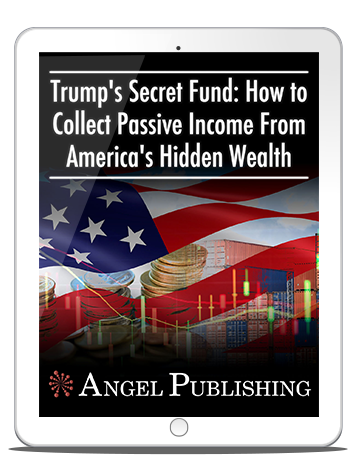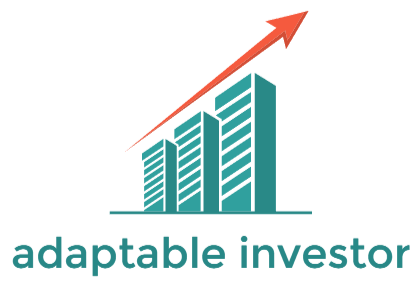Introduction
In recent months, Citigroup Inc. (NYSE: C) has made waves with unusually large compensation grants to key employees – a strategic move aimed at shoring up talent and execution. At its April 2025 annual meeting, shareholders overwhelmingly approved the issuance of 30 million new shares for variable compensation, paving the way for hefty stock-based awards ([1]). In Citigroup’s wealth management unit, new CEO Andy Sieg has likewise rolled out special retention bonuses to dozens of advisers to halt defections after a wave of departures ([2]). These “huge grants” underscore CEO Jane Fraser’s transformative strategy to rebuild Citi’s performance and culture, signaling what could be a game-changing pivot for the long-underperforming banking giant. Notably, the bank’s stock has responded in kind – Citi shares recently hit their highest level since 2008 ([3]) after a 60% surge in the past year that finally pushed the price above its tangible book value for the first time in years ([4]). Below, we dive into Citi’s dividend policy, financial leverage, valuation, and the key risks and questions surrounding this turnaround effort.
Dividend Policy, History & Yield
Citigroup’s dividend story reflects its turbulent history. The bank infamously slashed its payout to near-zero during the 2008–2009 financial crisis, and it did not resume a meaningful dividend until 2011 – when it reinstated a token $0.01 per share quarterly dividend, its first payout since 2009 ([5]). From that low point, Citi has steadily grown its dividend as its financial health recovered. Today, the quarterly dividend stands at $0.60 per share, increased from $0.56 following the latest Federal Reserve stress test clearance ([6]). This brings the annualized dividend to $2.40, which at the current share price equates to a yield around 2.5% ([7]).
Citigroup balances dividends with share buybacks to return capital to shareholders. In fact, the bank announced a new $20 billion share repurchase program in early 2025 on the back of strong earnings ([8]). Total capital returned to shareholders in 2023 was about $6 billion (combining dividends and buybacks), representing a payout ratio of roughly 76% of that year’s earnings ([9]). Such a high payout reflected relatively soft earnings in 2023 (due to hefty transformation and risk-control investments), but going forward Citi intends to grow into its dividend. Notably, big U.S. banks must have dividend increases approved via annual stress tests, and Citi’s recent dividend hikes (and large buyback plans) signal management and regulators are comfortable with its capital position ([6]). The current yield of ~2.5% is lower than a year ago only because Citi’s stock price has climbed significantly – a positive trade-off for investors as the market gains confidence in Citi’s turnaround.
Leverage, Capital & Debt Maturities
Citigroup operates with a strong capital base relative to regulatory requirements. As of year-end 2023, the bank’s Common Equity Tier-1 (CET1) capital ratio stood at about 13.3%, well above the 4.5% regulatory minimum and comfortably above the industry’s stress-test scenario averages ([9]) ([6]). This robust cushion indicates Citi has solid loss-absorbing capacity. In fact, Citi’s capital levels are so strong that Wells Fargo analysts recently flagged the stock as undervalued, noting its capital reorganization and surge in profits could allow the stock to double in three years ([10]) ([10]) (in part because excess capital can be returned to shareholders if not needed for risk). CEO Fraser has emphasized improving Citi’s return on tangible common equity (RoTCE) – a key profitability metric – which improved from a low 4.9% in 2023 to ~8.7% recently, with a goal of 10% by 2026 ([4]). Achieving that target should further bolster capital generation and support shareholder returns.

URGENT: Get “Trump\'s Secret Fund” — Learn How to Collect Royalty Checks
Limited report reveals the #1 American oil & gas royalty play that can start paying monthly — with just $50.
Start w/ $50
Yes — Send My Report
Fast download • Instant access • Seats limited
Regarding leverage and debt, Citi’s balance sheet is enormous (over $2 trillion in assets) but primarily funded by customer deposits rather than wholesale debt. The bank does carry a substantial amount of long-term debt – about $299 billion as of Q3 2024 – but maturities are well laddered over many years ([11]). For example, roughly $44 billion of Citi’s debt was due in 2025 and $50 billion in 2026, with the majority of maturities coming 2027 and beyond ([11]). This staggered schedule reduces refinancing risk. Citi also actively manages its funding profile; in one recent quarter it redeemed or repurchased about $9.9 billion of long-term debt to reduce interest costs ([11]). As a globally systemically important bank, Citi faces stringent liquidity and stable funding rules – and it comfortably meets those, as evidenced by regulatory ratios well above minimums. In short, leverage appears manageable: the bank’s high-quality capital and stable deposit base provide a solid backbone for its obligations. Interest coverage is not a concern in the traditional sense – banks treat interest expense as a core operating cost, and Citi’s net interest income remains positive even in a higher-rate environment (net interest margin has stayed healthy). The main “leverage” focus for Citi is maintaining capital ratios in the face of any new regulations (more on that in Risks below), rather than any threat of inability to service debt.
Valuation and Comparative Metrics
Despite the recent rally, Citigroup’s valuation remains modest relative to peers, suggesting further upside if its turnaround stays on track. At about $95–$100 per share in October 2025, Citi trades roughly near its book value (price-to-book ~1.0x) and just above its tangible book value (which was about $86 per share at the end of 2023) ([9]) ([4]). For most of the past decade, Citi languished below book value – something even the bank’s regulators and lawmakers have pointed to as a sign of market concern ([12]). Only now, after significant restructuring, has the market pushed Citi back up to book value, reflecting newfound investor confidence in the bank’s health ([4]). Yet Citi is still inexpensive compared to other mega-banks: its price-to-book and price/earnings multiples are significantly lower than peers, indicating potential undervaluation ([10]). For instance, JPMorgan Chase and Bank of America often trade at well over 1.4x book and mid-teens P/E ratios, whereas Citi is around 1x book and a forward P/E near ~11–12x based on improving earnings forecasts. This discount stems from Citi’s historically lower profitability and higher risk profile, but it also means that if Citi can close the performance gap (e.g. reach that 10% RoTCE target by 2026), there is ample room for multiple expansion. Indeed, some analysts see Citi’s ongoing restructuring and expense cuts as a catalyst for re-rating – Wells Fargo recently called Citi their “dominant pick” among banks partly due to this valuation disconnect ([10]) ([10]). In short, Citi’s stock is no longer the deep bargain it was a year ago, but it still trades at a noticeable discount to large-bank peers, providing upside if management delivers on promised improvements.
Key Risks and Red Flags
While Citigroup’s trajectory is looking up, investors should keep in mind several risks and red flags:
– Regulatory Compliance Overhang: Citi remains under multiple consent orders (from 2020 and 2023) with U.S. regulators due to past risk-management lapses. Progress has been slower than hoped – Citi even paid a $136 million fine in 2022 for inadequate progress fixing its data and control systems ([1]). Regulators (and even some lawmakers) have openly questioned whether Citi is “too large to manage” if it cannot promptly remediate these issues ([12]). The threat of harsher action looms if Citi backslides (Senator Elizabeth Warren has urged regulators to consider breaking up Citi if it doesn’t improve ([12])). This regulatory cloud will hang over Citi until the consent orders are lifted, likely limiting its strategic flexibility and adding compliance costs in the meantime.
– Operational Control Lapses: High-profile blunders have underscored Citi’s internal control challenges. A stark example: in 2024 Citi mistakenly credited a client’s account with $81 trillion (when the intended transfer was just $280) – a near-disaster caught and reversed within hours ([13]). Although no harm was done, such errors highlight the bank’s operational risk. Similarly, past incidents like the infamous $900 million mistaken payment to Revlon’s lenders (in 2020) still weigh on Citi’s reputation. These issues reinforce why regulators are pressing for systems upgrades. Any further major slip-ups could erode investor and regulator confidence in Citi’s transformation.
– Macro & Credit Risks: As a globally diversified bank, Citi is sensitive to macroeconomic swings. In Federal Reserve stress tests, Citi tends to show one of the largest capital declines under severe recession scenarios – the Fed projected Citi would be hit harder than peers in a deep downturn ([4]). This is partly due to Citi’s mix of businesses (e.g. exposure to trading and emerging markets). A sharp economic slowdown could lead to higher credit losses in Citi’s loan portfolio or trading losses, testing its resilience. Rising unemployment or corporate defaults would particularly impact Citi’s credit card and commercial lending units. On the flip side, a higher-for-longer interest rate environment could squeeze Citi’s net interest margin if deposit costs rise faster than loan yields (though rates easing could relieve that pressure). Citi must navigate these external risks carefully – its hefty capital buffer helps, but the bank is not immune to a serious global downturn.
– Transformation Execution & Expense Management: Citigroup’s ongoing reorganization (“transformation”) is multi-faceted – it involves exiting non-core businesses, overhauling technology and risk systems, and refocusing on stable revenue streams like wealth management. Execution risk is significant. The bank is in the process of selling or IPO’ing its Banamex consumer banking franchise in Mexico as part of simplifying operations ([12]) ([3]). While this will free up capital (and was applauded by regulators), it will also remove a profitable unit from Citi’s earnings mix, so the execution and valuation of the Banamex sale is critical. Additionally, Citi has been upping compensation (grants and bonuses) to retain talent during this overhaul ([1]) ([2]) – that’s strategically wise, but it elevates expenses in the short run. Some shareholders have expressed concern that Citi is paying hefty bonuses for “transformation” results that are not yet fully realized ([1]). If the promised improvements (in efficiency, revenue growth, and risk controls) don’t materialize, Citi could end up with higher costs without the expected benefits. In sum, Fraser’s team must execute well on cost-cutting, platform upgrades, and business refocusing to justify the heightened investments being made now. Any stumbles in this complex transformation could rekindle the “too big to manage” narrative.
– Potential Regulatory Changes: A final risk factor is the evolving regulatory environment. U.S. regulators are reviewing capital requirements (the Basel III “endgame” reforms) that initially looked to increase big bank capital mandates by ~19% across the industry – though recent signals suggest a softer approach may prevail ([14]). If stricter rules are implemented, Citi and peers might need to hold even more capital or long-term debt, which could constrain dividends and buybacks or require asset reductions. Conversely, a friendlier regulatory outcome (especially with a new administration) could ease some pressure. There’s uncertainty here that could impact Citi’s capital return plans and required capital levels over the next couple of years. Citi’s management has welcomed signs of regulatory flexibility (CFO Mark Mason praised efforts to revisit capital models ([3])), but until final rules are set, this remains an open item to watch.
Open Questions & Conclusion
Citigroup’s bold talent investments and restructuring moves appear to be turning the tide for the franchise, as evidenced by the stock’s strong performance and improving financial metrics. Still, several open questions remain for investors going forward:
– Can Citi Hit its Profit Targets? The bank is chasing a 10% RoTCE by 2026 ([4]). Achieving this will likely require further efficiency gains and revenue growth in core businesses. Will Citi’s overhaul deliver the earnings power needed to meet (or beat) that goal? – Banamex Sale Outcome: Citi plans to IPO its Banamex unit by late 2025 or early 2026 ([3]). The valuation and success of this deal will be telling. Will the separation unlock value and streamline Citi as intended, or could it face delays/regulatory hurdles and fetch less than hoped? – Talent Retention vs. Shareholder Returns: Citi’s use of large stock grants and bonuses to retain key staff (especially in wealth management) is a double-edged sword. Will these investments pay off in the form of improved business performance, or will elevated compensation costs weigh on margins if revenue growth disappoints? Additionally, how will shareholders react if substantial stock issuance for compensation dilutes their stakes over time? – Regulatory Resolution: Citi has been operating under the shadow of consent orders for years. A major catalyst ahead would be getting regulators to lift these orders – effectively a clean bill of health for its risk controls. When (and if) might that happen? Conversely, could continued delays prompt tougher actions (even asset restrictions or calls to break up, as some have suggested ([12]))? The timing and outcome here remain uncertain. – Macro Environment and Credit Cycle: How will Citigroup fare if economic conditions change? For instance, if a recession hits the U.S. or key international markets, can Citi maintain its recently robust performance? Its stress-test results suggest higher sensitivity to downturns ([4]), so this is an open question. Similarly, with interest rates in flux, how will Citi balance deposit costs and loan yields to protect its net interest margin?
In conclusion, Citigroup’s recent “game-changing” moves – including the huge compensation grants to secure talent – signal that management is aggressively pushing to reinvent the bank. There are clear positive signs: a healthier capital return profile, improving profitability metrics, and a stock price finally breaking out of its rut. The valuation still leaves room for upside if Citi can truly narrow the gap with best-in-class peers. However, the road ahead comes with challenges that cannot be ignored. Investors will be watching closely to see if Citi’s big bets on people and restructuring indeed translate into sustained, game-changing improvements in the coming years. The next few quarters (and the Banamex deal) should provide important clues as to whether this banking giant’s transformation will fully take hold – or if more course corrections lie ahead. Citigroup has shown it can make bold moves; now it must prove those moves were the right ones.
([1]) ([2]) ([4]) ([4]) ([4]) ([8]) ([6]) ([7]) ([9]) ([9]) ([3]) ([3]) ([13]) ([5]) ([10]) ([10]) ([12])
Sources
- https://reuters.com/sustainability/boards-policy-regulation/citigroups-shareholders-approve-2024-pay-ceo-executives-new-shares-grants-2025-04-29/
- https://reuters.com/business/finance/citigroup-awards-special-retention-bonuses-hundreds-bloomberg-news-reports-2024-11-25/
- https://reuters.com/business/finance/citigroup-cfo-expects-investment-banking-fees-market-revenue-grow-by-mid-single-2025-09-09/
- https://reuters.com/commentary/breakingviews/citis-ceo-gets-full-credit-job-half-done-2025-08-05/
- https://forbes.com/sites/heatherstruck/2011/03/21/citigroup-reinstates-dividend-reduces-share-count-with-reverse-stock-split/
- https://investing.com/news/stock-market-news/biggest-us-banks-hike-dividends-announce-share-buybacks-after-acing-stress-tests-4120180
- https://macrotrends.net/stocks/charts/c/citigroup/dividend-yield-history
- https://reuters.com/business/finance/citigroup-swings-profit-trading-strength-surging-deals-2025-01-15/
- https://citigroup.com/global/news/press-release/2024/fourth-quarter-full-year-2023-results-key-metrics
- https://reuters.com/business/finance/wells-fargo-names-citi-dominant-pick-predicts-stock-double-three-years-2025-01-03/
- https://fintel.io/doc/sec-citigroup-inc-831001-10q-2024-november-07-20035-1341
- https://axios.com/2024/10/08/citigroup-regulatory-problem
- https://cnbc.com/2025/03/01/citigroup-mistakenly-credited-a-customer-account-with-81-trillion.html
- https://reuters.com/sustainability/boards-policy-regulation/us-banks-expect-victory-capital-requirements-trump-regulators-revamp-rules-2025-10-02/
For informational purposes only; not investment advice.

